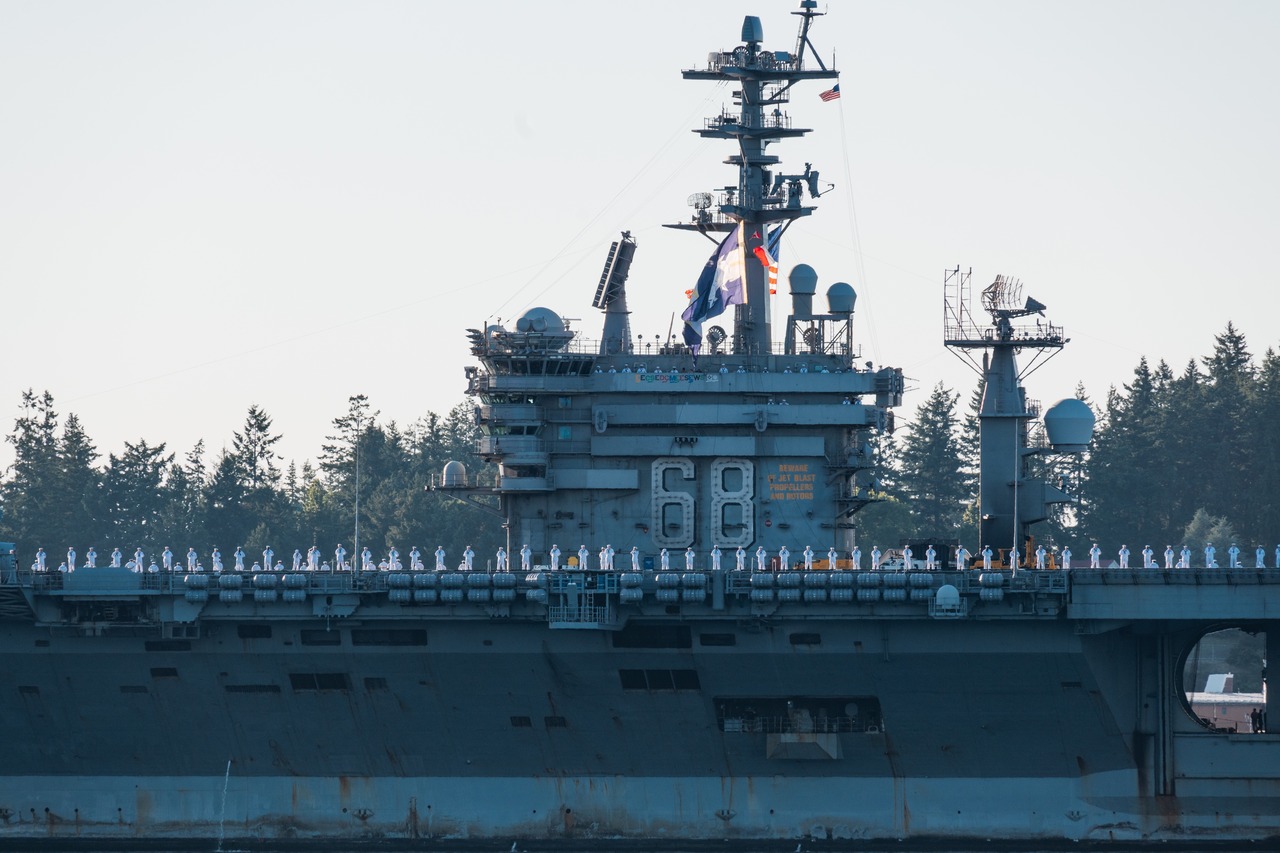
The Mighty USS Nimitz Aircraft Carrier Is Nearing Retirement
USS Nimitz (CVN-68) is set to retire in 2025 and has already begun the deactivation process.
The lead ship of the U.S. Navy’s Nimitz-class supercarriers is inching toward the end of its service life. USS Nimitz (CVN-68) is set to retire in 2025 and has already begun the deactivation process, marking a major milestone as one of the service’s longest-serving active aircraft carriers. Over the summer, manufacturer Huntington Ingalls Inc. received a whopping $18 million-plus contract from U.S. Naval Sea Systems to oversee preliminary planning to deactivate the nuclear-powered warship. Eventually, the USS Ronald Reagan is expected to replace the Nimitz in its role as the carrier homeported in the Pacific Northwest. The mighty carrier has served the Navy for nearly five decades and has a well-respected combat history. While the Nimitz-class is set to be replaced by the incoming Ford-class carriers, these ships remain the cornerstone of the service’s sea power today.
A brief overview of the Nimitz-class
Named to honor the World War II U.S. Pacific Fleet commander Fleet Admiral Chester W. Nimitz, the Nimitz ships represented the largest of their kind to ever be constructed prior to the introduction of USS Gerald R. Ford back in 2017. The lead ship of the class USS Nimitz entered service with the fleet in the 1970s. Over the next three-plus decades, carriers including Dwight D. Eisenhower, Carl Vinson, Theodore Roosevelt, Abraham Lincoln, George Washington, John C. Stennis, Harry S. Truman, Ronald Reagan, and George H.W. Bush also launched.
The Nimitz carriers were designed as successors to the Navy’s earlier Kitty Hawk and Enterprise classes. Perhaps the most notable enhancement incorporated on the Nimitz boats is their two nuclear reactors. Previously, Enterprise carriers featured eight reactors. Equipped with improved Westinghouse A4W nuclear reactors, the Nimitz-class ships can carry 90 percent more aviation fuel and 50 percent more ordnance than their predecessors. Additionally, these ships can travel at speeds in excess of thirty knots while underway.
Each Nimitz-class ship is capable of carrying sixty airframes, including an array of rotary-wing and fixed-wing aircraft with up to ninety different types. One of the more significant improvements incorporated on the Nimitz carriers is the cutting-edge GPS-enabled aircraft carrier landing system dubbed the Joint Precision Approach and Landing (JPAL) system. This sophisticated technology eases landing and taking off for pilots, which can be challenging to perform on a small, moving runway easily disturbed by subpar weather and sea conditions. JPALs were introduced to the Nimitz ships as part of a series of improvements designed to better prepare for the arrival of the fifth-generation F-35 Lightning II fighter jets.
Throughout its service life, USS Nimitz has seen multiple combat zones. In 1979, the carrier was deployed in Operation Evening Light in an attempt to rescue American hostages in Iran. In the following decade, Nimitz supported Operation Earnest Will in the North Arabian Sea and later supported U.S. troops as part of Operation Iraqi Freedom and the Global War on Terrorism.
Despite its extensive service track record, the USS Nimitz will retire in the near future. However, until the Navy can ensure the timely introduction of its latest Ford-class boats, Nimitz carriers will continue to preserve America’s maritime security strategy at sea.
About the Author: Maya Carlin
Maya Carlin, National Security Writer with The National Interest, is an analyst with the Center for Security Policy and a former Anna Sobol Levy Fellow at IDC Herzliya in Israel. She has by-lines in many publications, including The National Interest, Jerusalem Post, and Times of Israel. You can follow her on Twitter: @MayaCarlin. Carlin has over 1,000 articles published over the last several years on various defense issues.
Image: Irenee Houngblame / Shutterstock.com